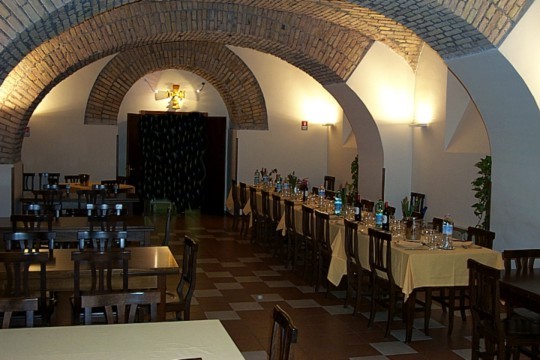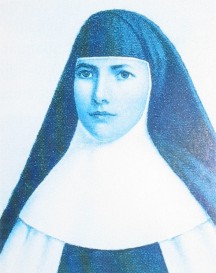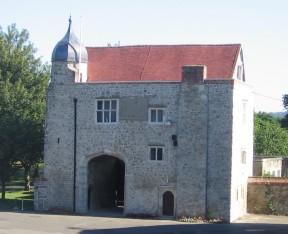|
no. 3 july - september 2004
The fourth meeting of the Domus Carmelitana Task Force held on July 7, 2004 in Rome. Colin Nadeau, a former Vice President of Marriott Hotels in the United States and Canada, attended. Agenda items from the previous meetings were reported on. A financial report shows that the total cost for the Domus Carmelitana in 2003 was 559,489 euros against an income of 803,328 euros. This means a surplus of 243,838 euros for the 2003 fiscal year. A surplus of 397,056 euros for 2004 is projected, based on the actual figures for the year. The management team is focusing on improving occupancy, especially in the low season. Year-to-date results are on track with a surplus of 80,000 euros recorded for May and June. The mortgage on the Domus has been extinguished and no external debt remains. The debt was internalized with loans from various Provinces and monasteries. Edison Tinambunam, O. Carm., Appointed Carmelite Librarian in Rome A member of the Indonesian Province, Edison Tinambunam, has been appointed as librarian of the Carmelite Library in Rome. Fr. Edison replaces Fr. David Waite who returned to his home Province this year. Fr. Edison spent some years studying in Rome and in 2002 completed his doctorate at the Pontifical University of St. Thomas Aquinas. His dissertation was entitled "The Preacher and Preaching According to Gregory the Great: A Commentary on Homilia in Evangelia 1, 17" Edison is expected to take up his new assignment in October. The Cause of Servant of God Arcángela Badosa, O. Carm. (CITOC’s publication of the update of the Carmelite saints [2004, n. 2] brought several comments from readers. Here we publish some updated information on the cause of Sr. Arcángela Badosa, O. Carm. of the Carmelite Sisters of Orihuela, Spain. Much of the historical information comes from an article authored by Redemptus Valabek, O. Carm., and published in Carmel in the World magazine 1992 vol. XXXI, n. 3.) The process for the cause of Servant of God Arcángela Badosa Cuatrecasas, O. Carm., opened in Rome on January 18, 2003. A study of the cause in order to prove the heroic virtue of the "Angel of Charity" (Angel de Caridad) is currently before the Congregation for the Causes of the Saints.
She was a lay sister, never trained in the nursing or teaching for which the other sisters of her congregation are well-known. There is a great contrast between her and the foundress of the Orihuela Carmelites, Mother Elisea Oliver Molina whose cause for beatification has also been introduced. There is also a contrast between Arcángela and her two blood sisters who also became Orihuela Carmelites, one of them the Superior General. Arcángela came to Carmel in January 1908. She had given her few possessions to her workmates. She began her postulancy on the feast of the Epiphany. Her superior told her sisters that "you’ve brought a chosen soul to our community—she is ahead of you in holiness." On July 8, 1908, the first day of the novena in honor of Our Lady of Mount Carmel, she was clothed in the brown Carmelite habit and began her novitiate. Her spiritual life was rich in its simplicity. When she was asked what she did to be pleasing to our Lord, she said, "When I get up I tell him, Lord – here you have me. Everything I do today, everything is for you – prayer, breath, work, walking, whatever I eat or drink … Everything is for him. I look at my neighbor as his image, and so I am always in prayer." Her simple method was to ask herself "How would Jesus do this. How would Our Lady do this?" And she would act accordingly. She said, "For me, it’s enough to follow the constitutions—Jesus asks no more than what I am living." After profession on August 9, 1909, she was assigned to Elda in the Alicante Province of Spain. She would spend the rest of her life there. At first she helped in the school working with the children but then moved to help in the hospital. Ministry in the hospital proved to be a very difficult assignment for her. When her superior refused to move her, she took it as God’s will and embraced it with all her might. She made care of the sick her life work. Her secret was a love that was not just a human response but one that she received from God. She took extraordinary care of her patients. On August 2, 1915, Arcángela made her perpetual vows. She was destined to continue her work of mercy among the sick until her early death. Without complications or excuses, Arcángela saw no discrepancy between her life of intense care for the sick poor and her Carmelite profession. Her secret was the essential dimension of Carmelite life – the practice of the presence of God. Asked how she managed, she replied "With the sick I am always at prayer because they represent God and I am always in his presence. Everything is a stimulus for contemplation because in everything I see God with his holy might and his love in favor of mankind." Sr. Mª Adela de Jesùs is the postulator for the cause in Rome. For more information on the cause, contact Sr. Adela at casuora@tiscali.it Carmelite Librarians Agree on Standards for Electronic Catalogue The Carmelite Librarians met in Boxmeer, Holland on July 1-3, 2004. Attending the meetings for the first time were representatives from the Carmelite Libraries in France, Ireland, and Poland. Others attending the meeting represented the Provinces of the Most Pure Heart of Mary, Australia, Britain, the Netherlands, and Rome. The group voted to accept two standards of cataloguing books which will allow for the electronic exchange of information. All libraries will begin using the MARC record format as well as Z3950 compliant databases. This will allow a person to simultaneously search several Carmelite libraries at one time for a particular book. It will also allow each library to update its own catalogue, eliminating the need for a central catalogue to be built and updated. All other Carmelite libraries not present will be asked to adopt the same standard. A week following the meeting, the Dutch Carmelite Institute announced that its Carmelite library catalogue has been placed on the internet making it accessible to Carmelites and others from anywhere in the world. Because it was the first meeting with the Provinces of Ireland, Poland, and the French Delegation present, each was asked to make a presentation on their library. William Harry reported on his visits to the libraries of several enclosed monasteries in the Andalucian region of Spain with Fr. Manuel Anguiano, the archivist for the Baetica Province and archivist and librarian of the Curia in Rome. The Irish Province is constructing a library as part of the renovation of Gort Muire Conference Center. They will also be hiring professionals to run the library and provincial archives. The library in Crakow was reported on and several members of the committee plan to visit Crakow in the next year to learn more about this tremendous resource for the Order. A fuller report on the library will be in a future issue of CITOC. The Center for Spirituality in Nantes, France has grown into a key part of the Carmelite presence in that country. The committee decided to meet there next year to see the library firsthand. A presentation was made by Dr. Antoine Jacobs, the director of the Monasticon Carmelitanum Neerlandicum project of the Dutch Province. He spoke about the Karmeliter Bucher in the Frankfurt, German archives. Millenduck was recording the history of the house in Frankfort an Main. However, he starts at the beginning of the Order’s history and then moving to Germany, the Czech Republic, Belgium and the Netherlands. The libraries will compile a list of CD’s which are available. There is interest in making modern books that are out of print, rare Carmelite books, and manuscripts available. These CD’s will be distributed through Edizioni Carmelitane with marketing especially to universities. In his welcome, Tjeu Timmermans, the Prior Provincial of the Dutch Province, praised the collaboration among the librarians which will "make available the richness of our libraries and our scientific institutes for the international Order." He added "The core business of a province is to give attention to the study and scientific research of our resources. This contributes to the growth of the Province and the Carmelite Order. It also contributes to the church and world of today where many people, religious as well as lay, are looking for a meaningful and spiritual life. The dream is to make available our important heritage." William J. Harry also attended the meeting as the General Councilor responsible for Culture. In his opening comments to the group, he reminded them that many are interested in raising the level of "culture" in the Order but need access to the tools to do so. He asked that they use these days together to push ahead on their agenda of establishing libraries, maintaining/improving the libraries we have, and developing the new forms of access to the libraries such as virtual access and books on CD. He suggested they look towards the 2005 General Congregation which will begin identifying areas for future planning. The next meeting of the Carmelite librarians will take place in January 2006 in Nantes, France.
Some of the buildings at Aylesford Priory, one of the original locations of the Carmelites in Europe, have been undergoing some much needed repairs. The 15 th century gatehouse at Aylesford Priory in England has been completely repaired some three years after the restoration appeal was launched. According to reports carried on BBC Radio Kent, the urgent repairs were needed as the ancient gatehouse was in danger of collapsing.The North Barn, located at the entrance to the property, is also suffering serious structural failure. The total cost of the project is over one million pounds. The present Gatehouse was originally constructed in the late 15 th century and Sir John Sedley, owner of the Priory buildings from 1570 to 1605 developed and embellished it in the late 16th century.It is now home to Donum Dei who help the Carmelite priests and brothers in the work of welcoming pilgrims and visitors to the internationally known pilgrimage center. It also serves as the ceremonial entrance to the Friars at Aylesford. Restoration of the North Barn is now underway. The website for the Friars at Aylesford is: www.thefriars.org.uk/ Donum Dei Professes 23 in Rome Ceremony Twenty-three Missionary Workers (Donum Dei) made their ‘engagement to Jesus’ and their temporary profession in the Third Order on June 6, 2004 at the Basilica of Sant’ Eustachio. A luncheon followed at L’Eau Vive restaurant which is run by the Donum Dei. Eleven of the group are from Burkina Faso. Two are from Kenya, five are from Vietnam, and one each comes from the Democratic Republic of the Congo, Perú, Colombia, Wallis-et-Futuna, and Vanuatu. The Missionary Family Donum Dei was founded by Marcel Roussel, a priest of the Diocese of Besançon, France in 1950. It was affiliated to the Carmelite Order on February 22, 1987 as part of the Carmelite Third Order. In 1982, a group of associate members called the "Donum Dei Fraternity" made up of families, mothers, and young people who would be missionaries in their homes and places of work was founded. In 1984, the two groups were united in one spiritual family with the name of "Missionary Family Donum Dei". Restoration of the Pictures in the Carmelite Sanctuary of Caivano, Italy On April 30, 2004 the restoration of the frescos (XV century) in the Carmelite sanctuary of Our Lady of Campiglione in Caivano, Italy was unveiled. The frescos date from 1419 and represent Our Lady, the 12 Apostles, and Christ. The sanctuary is administered by the Carmelites of the Neapolitan Province. Carmelites present included the Prior Provincial, Mario Alfarano, and Cosimo Pagliara. Also present was the Papal Nuncio for Italy, Bishop Paolo Romeo, the Archbishop of Aversa, Bishop Mario Milano, and the Carmelite Bishop from Avezzano, Lucio Renna, the Mayor of Caivano and other civic authorities. The artwork was restored by the City Council of Caivano. A celebration marked the 50th anniversary of the consecration of the basilica of Lisieux, dedicated to world patroness of the missions, St. Thérèse. Plans for the construction of the basilica began when the saint (1873-1897) was canonized by Pope Pius XI on May 17, 1925. Actual construction got under way in October 1928, with the support of the same Pope. It is estimated that it receives some 800,000 visitors a year. Although it was the largest religious building built in Europe in the 20 th century, the capacity for 4,000 persons is not large enough so giant television screens and additional halls have to be used.Even Vatican Radio pointed out the paradox between this huge basilica and Thérèse’s humility. "It is true, this is the first question that arises spontaneously," Monsignor Lagoutte said. "But the basilica is not a monument to prestige. It is a Magnificat of the little and humble ones." Adapted from Zenit News th Meeting of the Union of Superiors General (USG) The theme of the 64 th meeting of the Union of Superiors General (USG), held in Rome, was "New Relationships within the People of God". About 120 Superiors General and Vicars-General were present for the event that took place at the end of May 2004.The meeting began with a conference on the theme by Fr. Aquilino Bocos, the former Superior General of the Claretians. His starting point was the forthcoming 40 th anniversary of the document of the Second Vatican Council, Lumen Gentium. In this document, it was clearly expressed that all Christians are called to holiness and therefore have an important role in the mission of the Church. He also pointed out that it is 25 years since the document "Mutuae Relationes", which sought to increase the dialogue between bishops and religious superiors.Clearly we are living in changing times and one of the signs of the new context in which the Church is living is that lay people have acquired a greater awareness of their place and mission in the People of God. So too have those in the consecrated life, assisted by the post-synodal document, "Vita Consacrata": Consecrated life, present in the Church from the beginning, can never fail to be one of her essential and characteristic elements, for it expresses her very nature." (VC 29). "Communion" is a key word in the Church of our day. It refers to a network of relationships, all geared towards continuing the mission of Jesus Christ until he comes again. Consecrated persons are asked to be experts of communion, bringing people together for the common purpose. The bishop is to serve his diocese as father, brother and friend, bringing together all the diverse elements in the diocese and forming them into one family. Towards the end of the meeting, Fr. Bruno Secondin, O.Carm., presented a reflection of the theological commission in preparation for the Congress for Religious to be held in November 2004. About 800 Superiors General and other representatives of the consecrated life will come together then to study the theme: "Passion for Christ. Passion for Humanity." |
|
RETURN TO THE INDEX FOR 2004 | RETURN TO THE INDEX FOR THIS ISSUE INDEX OF CARMELITE
WEBSITES |

 Sr. Arcángela spent most of her religious life caring for the sick, and
that even then she was known for her exceptional powers of intercession
with our Lord. People vied to have her lay her hands on them because
healing often followed, and the wonders continued after her early death.
Many are recorded in El Santo Escapulario, a magazine published by
the Baetica Province, and in the book Angel de Caridad by Fr.
Rafael López Melús, O. Carm.
Sr. Arcángela spent most of her religious life caring for the sick, and
that even then she was known for her exceptional powers of intercession
with our Lord. People vied to have her lay her hands on them because
healing often followed, and the wonders continued after her early death.
Many are recorded in El Santo Escapulario, a magazine published by
the Baetica Province, and in the book Angel de Caridad by Fr.
Rafael López Melús, O. Carm.